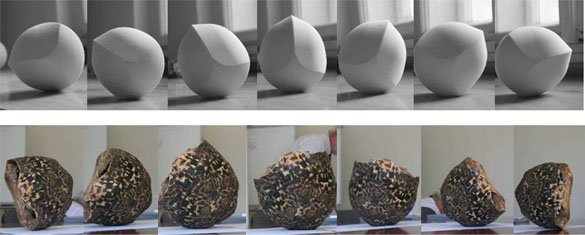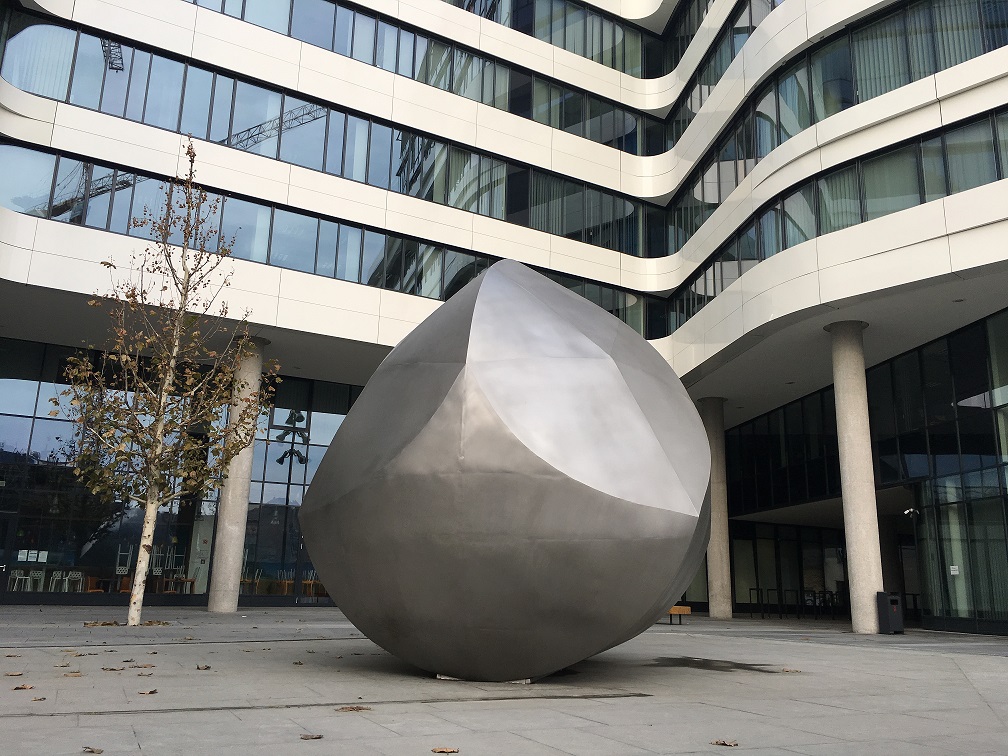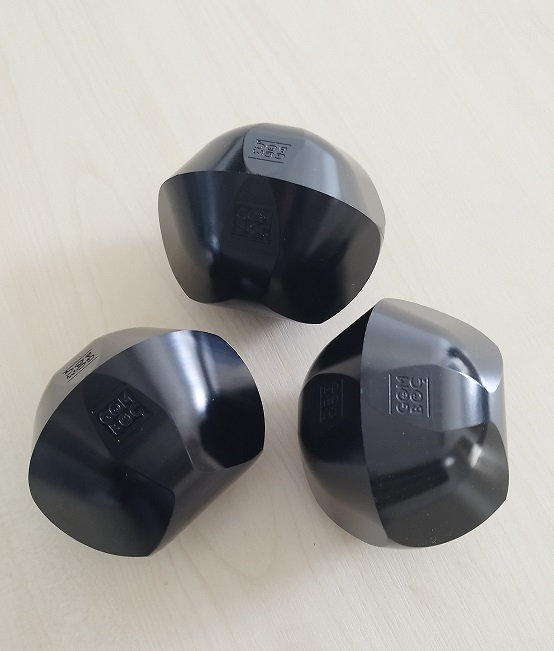What is the Gömböc?
The Gömböc is a special geometric shape, which is a result of an interesting mathematical question asked by one of the most influential mathematicians of the 20th century, Vladimir Igorevich Arnold: can convex, homogeneous objects with just two balance points exist? The Gömböc is the first known such shape; like a weeble, it always returns to its originally upright state position on a horizontal surface when you move it, however, unlike the toy, it has no added bottom weight. The Gömböc shape appears to be deeply embedded in the natural world. For example, as pebbles erode, they reduce their number of equilibrium points and thus become more similar to the Gömböc. Some animals with shells, such as certain turtle species also have Gömböc shaped shells which makes them able to self-right.

The Inventors
The theory of Arnold was proven in 2006 by Gábor Domokos and Péter Várkonyi, two Hungarian professors at the Department of Mechanics, Materials and Structures of the Budapest University of Technology and Economics (Budapesti Műszaki és Gazdaságtudományi Egyetem - BME). After more year-long research first, they created a mathematical example and then they constructed the physical example of Arnold’s theory, which they named the “Gömböc.” Prof. Domokos and Várkonyi are still teaching at BME - beyond giving lectures, at prestigious universities all around the world.
 Gömböc statue at Corvin sétány in Budapest
Gömböc statue at Corvin sétány in Budapest
The impact and usage of Gömböc
Gömböc is a significant scientific innovation in mathematics, geology, and biology as well as in art and design. It received large international media attention, repeating the success of the Rubik’s cube, another famous Hungarian invention from 1974. In 2007 the Gömböc made its debut on the cover of Mathematical Intelligencer, and it was hailed by the New York Times as one of the 70 most interesting inventions of the year.
This discovery has not only inspired top scientists, engineers, and artists but also helped to shed light on some of nature’s exciting mysteries. The Gömböc facilitated the development of a geometrical theory with applications ranging from biology, geophysics or planetology. It helped NASA to identify ancient rivers on Mars and also contributed to explaining the spaceship-like shape of the first interstellar asteroid ‘Oumuamua. The Gömböc shape drove cutting-edge innovation in robotics and drug delivery and it inspired also the work of leading contemporary conceptual artist Ryan Gander.
In a recent study a research team at the Massachusetts Institute of Technology (MIT) and Harvard Medical School used their own, Gömböc-inspired insulin capsule to deliver orally dosed mRNS vaccine, developed by Katalin Karikó and her colleagues.
 Gömböc
Gömböc
Prestigious universities (e.g. Princeton, Cambridge, Heidelberg, Cornell, Oxford, Berkeley, Tokyo, Sorbonne and Harvard) and collections (e.g. Windsor Castle and the Hungarian National Museum) have put uniquely numbered Gömböc models on permanent exhibit.
If you want to read more about the Gömböc, check out its website HERE!
Sources: